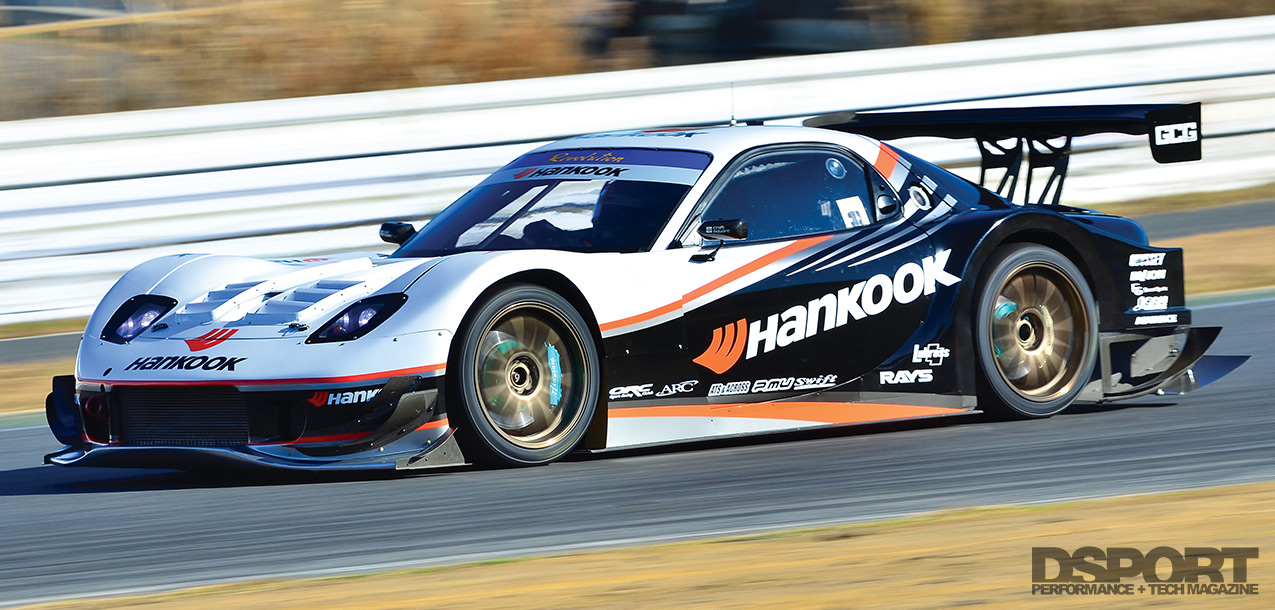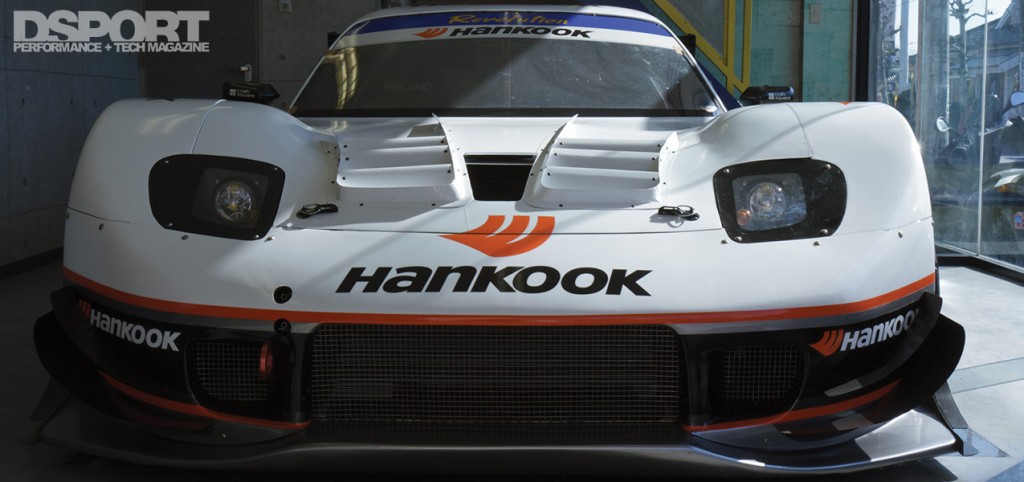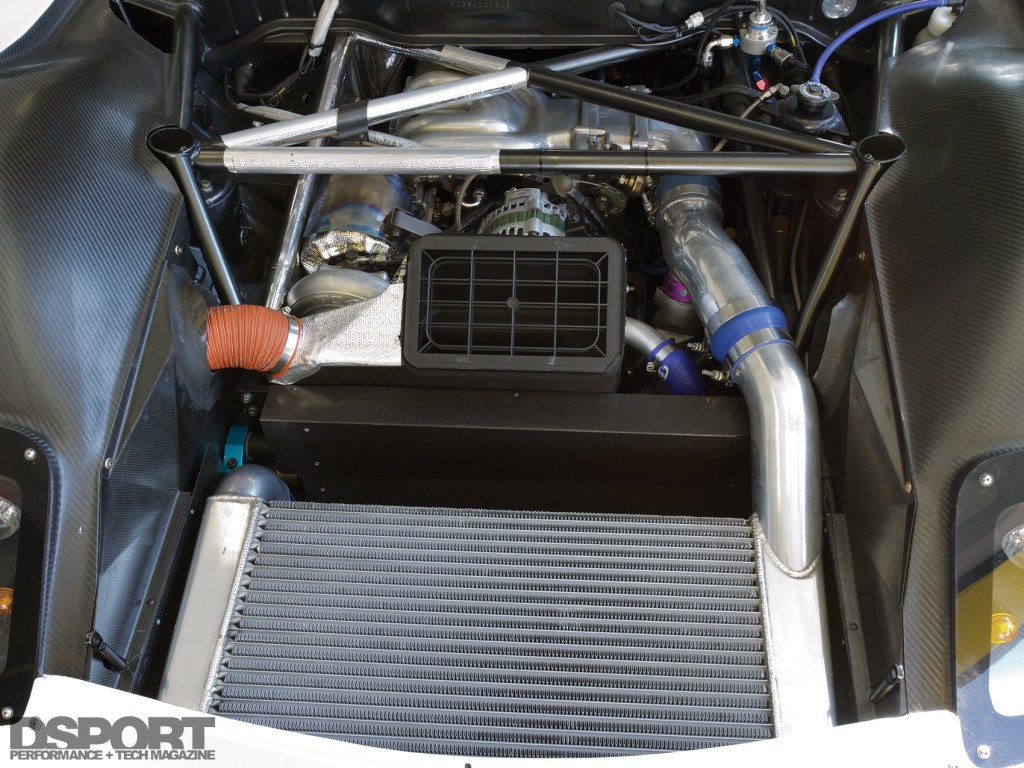In Japan, the pursuit of time attack records has driven tuner shops and privateers alike to Tsukuba Circuit, the Mecca of time-attack competition. This benchmark circuit has been the battlefield where many a competitor has waged war against the clock in the hunt for class records. The highest honor is the overall track record, currently held by Nobuteru Taniguchi behind the wheel of the HKS CT230R EVO with a 0’53”589-second lap. This record has stood for over three years, with many tuners aiming for the title and the honor.
Text and Photos by Richard Fong
Takashi Aoki, the president of Revolution Motoring Communications set a goal in 2008 to pursue the long standing record. Recognizing the importance of a well- rounded, lightweight and powerful chassis to get around the circuit quickly, Aoki devised a plan. Since rotaries are his specialty, he decided to build upon the Mazda RX-7 (FD3S) platform.
Birth Of A Revolutionary FD
Aoki started by cutting up an FD chassis. Like the HKS CT230R, the chassis was gutted and stripped clean to remove every extraneous ounce from the vehicle. A chromoly tube-frame front and rear were fabricated along with an intricate cage, making the chassis lightweight yet rigid for improved handling. An RE Amemiya dry carbon-fiber GT300 shell was then fitted to the tube frame, giving the FD aggressive looks and the necessary aerodynamic profile for competitive lap times.
No Pistons For The Win
A race prepped 13B-REW rotary engine served as the foundation for propelling the FD around the track. The rotor housings received port work prior to assembly while the rotors received special three-piece apex seals to ensure reliable performance. The exhaust ports feed spent gasses to the inlet of an HKS T04Z turbocharger. A Revolution dry carbon-fiber airbox filters the ambient air before it is compressed and channeled into an ARC intercooler. Once the aircharge reaches the intake ports, 850cc/min primary injectors backed by 800cc/min secondary injectors spray 100-octane unleaded fuel into the rotor housings.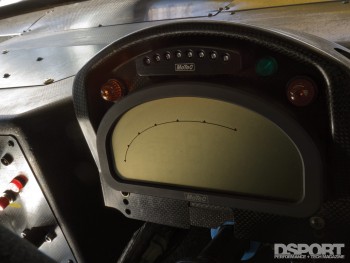
Tuned For Power
Commanding fuel delivery and ignition timing was entrusted to a MoTeC M2R engine management system. With boost pressure regulated to 22 psi by a MoTeC boost control solenoid and a MoTeC CDI ignition amplifier delivering spark energy to the leading and trailing NGK spark plugs, the TA-2’s 13B produced an estimated 591 horsepower.
Quick Through The Gears
Now able to generate competitive horsepower, attention focused on power delivery. An Ogura Racing Clutch triple-plate clutch mated to the eccentric shaft transfers power to a Hewland Engineering 6-speed sequential transmission. The propeller shaft turns a 3.9:1 final drive gear that distributes power to the wheels by way of an ATS Carbon 1.5-way limited-slip differential.
Filling The Fender Wells
A quick look inside the dry carbon-fiber fender wells and you’ll see a custom Revolution double-wishbone suspension setup with custom knuckles. Project Mu 6-piston calipers squeeze Project Mu 999 pads down on 355mm Project Mu vented rotors up front and 332mm rotors in the rear. Volk Racing RE30 wheels mounted with Hankook Ventus Z221 tires provide good stick for the quick.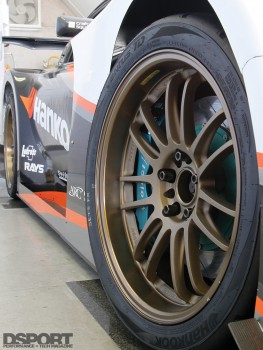
Carbon-Fiber Cockpit
Inside, the FD’s floor pan was cut out and replaced with chromoly tubing and dry carbon-fiber floor panels. Revolution created a carbon-fiber tunnel, dash and center console that house the switch gear and MoTeC datalogger display. A Momo steering wheel receives steering input while a Recaro Carbon- Kevlar Profi SPA seat holds the driver securely in place.
Not Quite There Yet
The Hankook-Revolution TA-2 was ready to shake down at the track and shake up the competition. At the 2008 Rev Speed Tsukuba Super Battle, under less-than-ideal track and weather conditions, the TA-2 finished second only to the Cyber EVO with a 0’56”094 lap time. In 2009, mechanical issues held the team back. They ended up taking the place of runner up for a second year with a best lap of 0’55”915. Despite the progressively quicker laps, Aoki felt that more time could be extracted with additional refinement.


